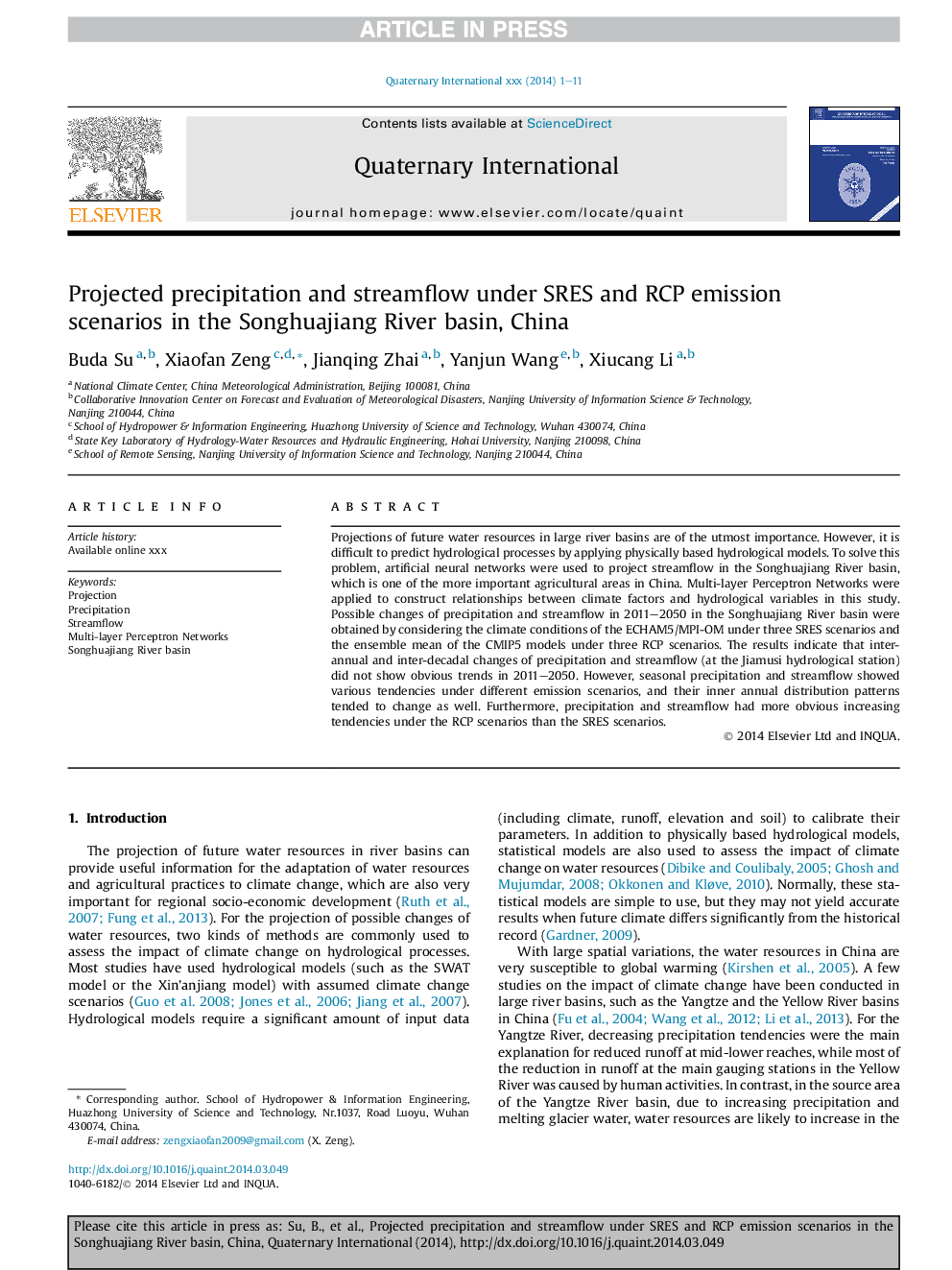| Article ID | Journal | Published Year | Pages | File Type |
|---|---|---|---|---|
| 7451477 | Quaternary International | 2015 | 11 Pages |
Abstract
Projections of future water resources in large river basins are of the utmost importance. However, it is difficult to predict hydrological processes by applying physically based hydrological models. To solve this problem, artificial neural networks were used to project streamflow in the Songhuajiang River basin, which is one of the more important agricultural areas in China. Multi-layer Perceptron Networks were applied to construct relationships between climate factors and hydrological variables in this study. Possible changes of precipitation and streamflow in 2011-2050 in the Songhuajiang River basin were obtained by considering the climate conditions of the ECHAM5/MPI-OM under three SRES scenarios and the ensemble mean of the CMIP5 models under three RCP scenarios. The results indicate that inter-annual and inter-decadal changes of precipitation and streamflow (at the Jiamusi hydrological station) did not show obvious trends in 2011-2050. However, seasonal precipitation and streamflow showed various tendencies under different emission scenarios, and their inner annual distribution patterns tended to change as well. Furthermore, precipitation and streamflow had more obvious increasing tendencies under the RCP scenarios than the SRES scenarios.
Keywords
Related Topics
Physical Sciences and Engineering
Earth and Planetary Sciences
Geology
Authors
Buda Su, Xiaofan Zeng, Jianqing Zhai, Yanjun Wang, Xiucang Li,
